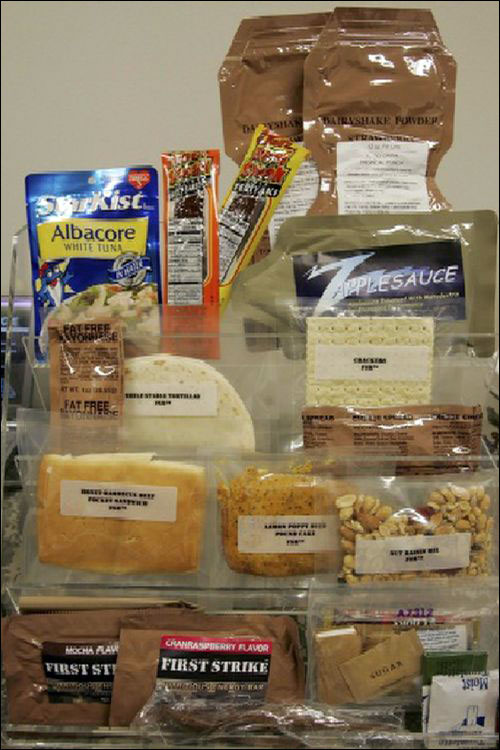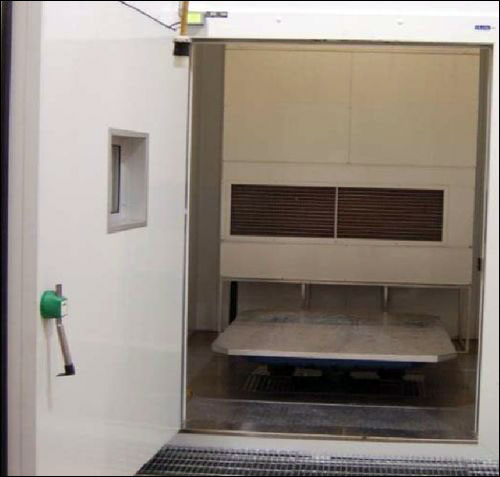Jan 26, 2012Researchers at the University of South Florida Polytechnic (USF Poly) and the University of Florida are currently working on the second phase of a project to determine how radio frequency identification technology could be used in conjunction with temperature sensors to attain visibility into the temperatures to which First-Strike Rations (FSR) for U.S. troops are exposed during shipment and storage, as well as how that might affect the products' shelf life. The project is intended to help the U.S. Department of Defense (DOD) determine how monitoring the temperatures of FSRs could improve the safety and freshness of the meals, while also reducing the amount of wastage resulting from food becoming spoiled prior to consumption.
To date, the group has completed Phase I of the project, which consisted of creating algorithms that can be used by software to calculate a food product's shelf life based on its temperature, and testing various models of semi-passive RFID sensor tags. As part of this project, the University of Florida provided research into the effects that temperature can have on food degradation, which served as the basis for the shelf-life algorithms. In addition, the University of Florida, the Georgia Institute of Technology and Franwell collaborated to develop software for interpreting and storing data generated by tag reads, thereby creating a history of temperature levels recorded by each tag, and predicting a particular product's shelf life based on the results.

The project is headed by Ismail Uysal, an associate professor at USF Poly's College of Technology and Innovation, and the director of the College of Technology and Innovation Research Lab. Uysal led the RFID tag-testing efforts and the development of algorithms during phase I as a member of the University of Florida's staff, before taking his current position at USF Poly. During this second phase, Uysal says, his team is tasked with validating the shelf-life model presented to the DOD upon the conclusion of Phase I. To do so, the researchers have created a series of software-based simulated supply chain environments. In these environments, he reports, the group has thus far proven that RFID could effectively provide necessary temperature fluctuation data during the transportation and storage of products, as well as alerts related to expiration dates. The next step, Uysal says—which the group is presently working on—is to determine if a first-expired, first-out (FEFO) method would allow more meals to reach troops before their shelf-life expiration date, at which time they must be discarded.
First-Strike Rations are lightweight, high-calorie products designed to be eaten by soldiers on the move. Because an FSR consists of semi-perishable food, each one is immediately stamped with a use-by date that expires two years from the day of packaging. What occurs between the time of manufacture and when an FSR reaches the troops, however, could affect that shelf life. For example, high temperatures could cause accelerated food degradation. Nevertheless, it has not been clear how much temperature fluctuation a ration might be exposed to, how that exposure could be measured or how that fluctuation could affect shelf life. The University of Florida created a template, based on temperature fluctuation, for indicating the amount of shelf life remaining for a particular FSR.
Beginning in 2008, the University of Florida researchers started testing ultrahigh-frequency (UHF) passive temperature tags. The Department of Defense also requested that only handheld readers be used, since deploying fixed interrogators would not be possible at many points along a supply chain, including when war fighters received their rations. Although the DOD wanted a passive tag, the tag would require a battery to power the sensor so that it could measure and record temperatures at regular intervals. "There are a lot of active temperature-sensing tags," Uysal states, "but for passive, there wasn't a lot of choice." In fact, he notes, only three companies provided such a tag at the time: CAEN RFID, Intelleflex and Infratab. The DOD also instructed researchers to use those off-the-shelf tags, rather than design their own.
The group used the simulation chamber to confirm a model for estimating FSR pallet temperatures by means of environmental temperature data. In that way, by measuring the temperature on the outside of a given pallet, the model would enable the software to estimate the temperatures of the FSRs themselves. The University of Florida also provided the results of the food-degradation testing, based on rises in temperature, and Uysal and his colleagues employed those results to create algorithms for the jointly developed software.

For the project's second phase, launched in April 2011, the USF Poly group developed simulation software that mimics the typical supply chain for the movement of FSRs to troops, with the goal of demonstrating the benefits that might be gained by adopting an FEFO system in the supply chain, as opposed to a first-in, first-out (FIFO) procedure. The software will analyze RFID read results for a simulated FEFO plan, calculate the rations' shelf life and recommend which products need to be shipped to a customer first—not necessarily the first product to arrive at a distribution center, but the one with the closest approaching expiration date.
The second phase of the project is expected to end in December 2012, at which time the researchers plan to present their findings to the Department of Defense. Uysal says he does not know if the DOD will eventually adopt an RFID-based temperature-sensing system, but that the results to date indicate to him that RFID temperature sensors could provide visibility that would be of use not only to the military, but also to commercial sectors, such as companies shipping fresh produce to stores.
"Even though we're doing this for the DOD," Uysal says, "the same prototype and algorithms would apply to the shipping of other items."


